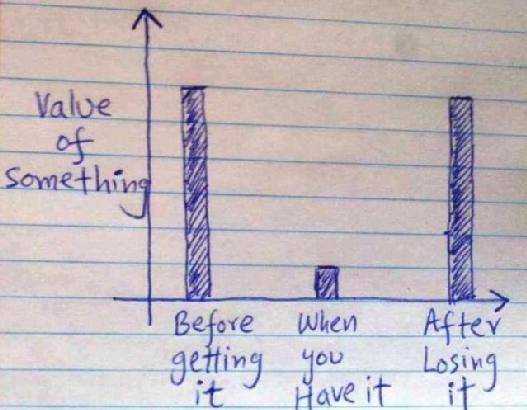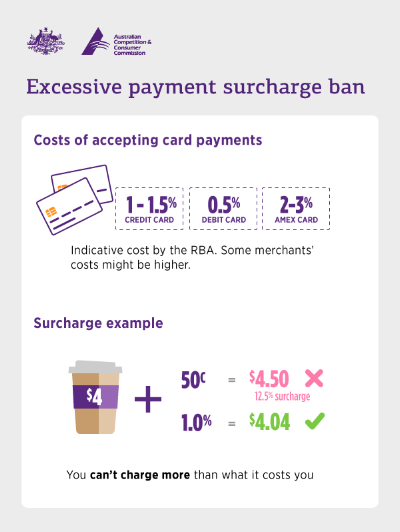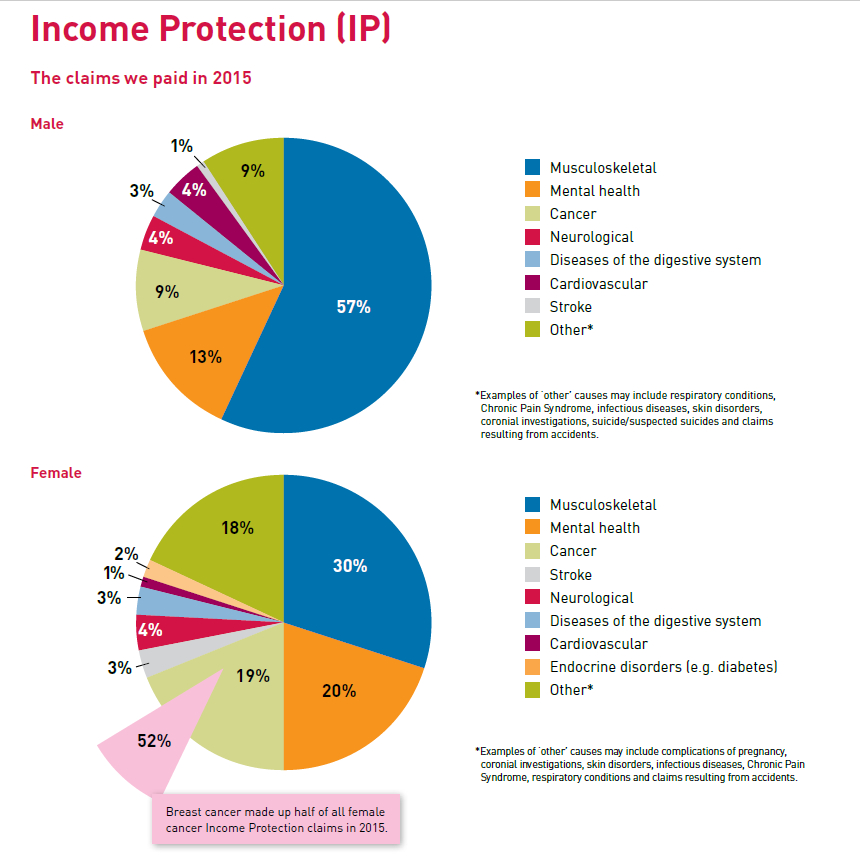Spring has sprung, which means with the warmer weather on its way we will start to come out of the winter slumber. Leading in to the end of the year when people look to tidy things up before the end of the year (yes, only 16 weeks until Christmas!), it is also a good idea to spring clean your finances. Some things to review and consider:
- Have you reviewed your budget lately? (you do have a budget, right?)
- Are your insurances up to date, and been reviewed in the last 18 months?
- Do you have a valid will?
- Keep in mind that life events such as marriage, divorce, and having children can all make your will invalid
- Have your reviewed your loans and know your interest rate, repayment terms and how much principal you are paying off?
- Are you in a better financial position now than you were at the beginning of the year? If not, what are you looking to do to change that before the end of the year and into 2018?

Ban On Excessive Credit Card Surcharges
From 1 September 2017, every business across Australia will be banned from charging customers excessive surcharges for using certain types of EFTPOS, Mastercard, Visa and American Express cards to make payments.
The ban has applied to large businesses since September 2016 and now extends to all businesses that are either based in Australia or use an Australian bank. The ban has no impact on businesses that choose not to apply a surcharge to card payments.
If you’re a business that charges consumers a surcharge, you can only charge what it actually costs you to process card payments, such as bank fees and terminal costs. For example, if your cost of acceptance for Visa Credit is 1.5%, your customers can only be charged a surcharge of no more than 1.5% on payments made using a Visa credit card.

The RBA provides detailed information for businesses, including how they identify and quantify those costs that can be passed on to a consumer as a surcharge.
The ACCC also provides online guidance material for businesses which will help you understand the ban.
Claiming GST When Paying By Credit Card
With the changes in technology, often the easiest way to pay for expenses is by credit card, particularly with the ease of payment using methods like payWave. But what can you do if you don’t have the tax invoice from your purchase because you either forgot to ask for one or you have lost the invoice you were given?
If the purchase is under $75, then you do not need to hold a tax invoice to claim the GST. If the purchase is over $75, then you are required to have a valid tax invoice to be entitled to claim back the GST. If you have a corporate credit card then you can be relieved of the need to hold a tax invoice if you meet the following requirements:
- the cardholder must hold a corporate card statement that records a transaction which includes a purchase for business purposes and meets the following information requirements:
- the date of issue of the corporate card statement
- the identity or ABN of the cardholder;
- the name(s) of the person(s) or department(s) that uses the corporate card to purchase the creditable acquisition, or in the case of fuel cards, the vehicle identitifer;
- for the particular transaction:
- the date of the purchase
- the identity of the supplier, or driver ID for taxi travel
- the ABN of the supplier
- a brief description of the supply, or if not available, a description or code identifying the supplier’s industry;
- the GST payable; and
- the total amount paid
- the cardholder must have in place:
- an effective corporate policy for determining the GST claimed on purchases made on the corporate card that are wholly or partly of a private or domestic nature; and
- an effective policy to ensure the tax invoice and credit card statement are not used to incorrectly claim GST more than once
- the creditable acquisition on the corporate card statement must not have an ‘estimated GST amount’
For the corporate card statement, the corporate card provider:
- must meet the accuracy requirements for transaction information i.e. not include GST information if they have any reason to believe it is inaccurate; and
- must have in place an accurate method of obtaining or calculating the transaction information (date of transaction, identity of supplier etc.); and
- can choose to use the signed statement method to satisfy the requirements for transaction information:
- card provider to have a signed statement from each supplier that states their ABN,
- states type of supplies made for which cards are accepted,
- state whether GST is calculated at 1/11th for all of the taxable supplies made, and
- undertake to notify when they are no longer registered for GST or cease to make only taxable supplies.
Deductions For Non-Compulsory Uniforms
The Australia Taxation Office has recently changed its focus from reviewing certain job types each year, to now focusing on particular claims for deductions, particularly where the amount claimed is higher than the average for the industry. One of those focus areas is claiming for work uniforms, and more particularly non-compulsory work uniforms. A tax deduction is allowed for expenditure on uniforms or wardrobes where either:
- the clothing is in the nature of occupation specific or protective clothing
- the wearing of the clothing is a compulsory condition of employment for employees and the clothing is not conventional in nature; or
- where the wearing of the clothing is not compulsory, the design of the clothing is entered on the Register of Approved Occupation Clothing.
What this means is that for non-compulsory uniforms, that uniform must be registered with AusIndustry and be on the Register of Approved Occupation Clothing.
How do I register the work uniform?
For a design to be entered on the Register, the design as a whole must have a distinctive look and a cohesive and obvious identity. Corporate, product or service identifiers are a compulsory requirement for any design. There are two types of identifiers:
- stand alone – a corporate, product or service identifier which is a discreet symbol, logo, initial, form of words etc. and which is distinct from the item of clothing to which it is affixed; and
- pattern – a corporate, product or service identifier which is used in the form of a distinctive pattern over the entire item of clothing and which forms an integral part of that clothing
The minimum size of a stand alone identifier must be sufficient to cover 80% of a four square centimetre area for clothing, and a one square centimetre area of any accessories. It must also be in a contrasting colour to the background of the clothing, permanently fixed to the clothing and visible from a distance of two metres.
What if my non-compulsory uniform is not registered?
If the non-compulsory work uniform is not on the Register of Approved Occupation Clothing, then as an employee you will not be able to claim any deductions in relation to the purchase of that uniform, or laundry of the uniform. If you have expenses in relation to a compulsory work uniform, or protective clothing, then you will be able to claim costs relating those items subject to the normal rules for claiming expenses for work related clothing.
Claiming Company Tax Losses And Same/Similar Business Test
If you operate a company which has incurred a loss in any financial year, then you can carry that loss forward and offset it against future income where you satisfy one of the following tests:
- continuity of ownership test
- same business test
If the company fails the continuity of ownership test (i.e. doesn’t maintain the same owners with greater than 50% ownership), then the company will need to rely on the same business test. A new similar business test will be brought in to replace the same business test, to widen the currently restrictive test on carrying forward tax losses.
Who will the changes affect?
These changes will affect any company that has carried forward tax losses (including capital losses), where there is a change of majority ownership in the company from the time the losses are incurred until the time the losses are being claimed as a deduction against other income.
What are the changes?
Currently, the same business test requires the company to carry on the same business at all times, and is not able to earn income from a business of a kind that it did not carry on when the loss was incurred, or from a transaction of a kind that it had not entered into previously. This current test is quite restrictive as it does not allow for the growth or expansion of the business into selling something that might be related to the existing business but is not exactly the same. The new “similar business test” that has been introduced into parliament but will apply from 1 July 2015, will have four factors to determine eligibility:
- The extent to which assets that are used in the current business to generate income were also used in the former business to generate income
- The extent to which activities and operations from the current business were also the activities and operations from which the former business generated assessable income
- The identity of the current business and the identity of the former business
- The extent to which changes to the former business resulted from development or commercialisation of assets, products, process, or services of the former business.
Example
ToUrDoor Pty Ltd is an established courier company based in the Sydney CBD. The company operates from an office located in the Sydney CBD, under the brand name “ToUrDoor”, and has established a significant customer base, consisting primarily of office businesses across the Sydney CBD. ToUrDoor Pty Ltd completes short run deliveries of small parcels, letters and paperwork using its fleet of bicycles, and prides itself on being reliable, fast and affordable. Customers can request a courier service through the ToUrDoor website or app, or by calling their direct line. The bicycles are fitted with GPS tracking, allowing customers to track their delivery in real time, and weatherproof, hard-case boxes at the rear in which customers’ items are transported. Although the business has been moderately successful, more recently it has been less profitable and incurred tax losses.
In an attempt to increase the efficiency of its couriers, the company invests in reviewing its fleet of bicycles, including researching potential new bike designs and the use of lightweight materials. To acquire new funds in order to fund this research, ToUrDoor Pty Ltd gained a new equity investor, causing it to fail the continuity of ownership test.
| Passing the similar business test | Not passing the similar business test |
| – Develops a new bicycle design that incorporates a cost-effective and readily available material, which keeps the contents of the box insulated. | – Purchases heat-insulated boxes that can be carried by the courier like a backpack, enabling the company to provide food delivery. |
| – The company applies for a patent on the new design. | – New food delivery bookings can be placed without booking courier services. |
| – The bicycles can now be used to deliver food. | – Company buys food directly from restaurants. |
| – The new design opened up a new client base and charges the customers a comparable fee in the same way it charges for other courier service. | – A delivery fee is charged on top of the food, which proves to be profitable and generates a large portion of its assessable income. |
The company (on the left side) passes the similar business test because:
- the change is solely a result of the research and development that went into developing the new bicycle design (factor four)
- the company’s tangible and non-tangible assets continue to be used to the same extent (factor one) to generate assessable income as previously
- goodwill associated with the company’s courier business continues to be used to the same degree (factor one). Meanwhile, the company has established new goodwill as a result of developing the new bicycle design (factor four)
- the core business activity of delivering documents and parcels continues to generate assessable income to the same extent, albeit it has evolved to include the delivery of food (factor two), and
- the company’s reputation for providing reliable services has evolved over time to offer a wider range of services (factor three). This shift was a result of the re-designing its bicycle.
The company (on the right side) does not pass the similar business test because:
- while the company continues to generate assessable income from using the previous assets (factor one), the new income generated from food delivery using the heat-insulated boxes constitutes a significant change
- the change did not result from the development or commercialisation of the old bicycle design. Instead, they simply purchased the heat-insulated box from a third party and used this product to fill an existing gap in the market (factor four), and
- there is a change in the identity of the business, from a courier business to a broader delivery service with a focus on food (factor three), that did not stem from the development of assets, processes or services (factor four). The business might be of a similar type to that carried on previously but it is not sufficiently similar for the purposes of the test.
If you have any questions about any the above changes, or you would like to know if they will affect you, please contact us at Value Beyond to review your situation.
Upcoming Dates
21 September 2017
Lodgement and payment of monthly August 2017 activity statements
30 September 2017
Lodge PAYG withholding payment summary annual report if prepared by a tax agent
21 October 2017
Lodgement and payment of monthly September 2017 activity statements
31 October 2017
Lodge tax returns for all entities with one or more prior year returns where outstanding as at 30 June 2017





